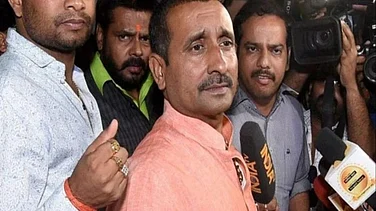Russia has 11 time zones, America nine, Canada seven and Australia three. Should India continue to have only one? Last week Assam chief minister Tarun Gogoi revived the old debate on the wisdom of having more than one time zone in the country. This alone, he felt, would help the Northeast states to maximise their efficiency and productivity. Government offices in Assam, which remain open between 10 am and 5 pm as in the rest of India, Gogoi added, would open and shut an hour earlier. After all, Assam has followed for a century the ‘Tea Garden Time’, which is ahead of the Indian Standard Time by an hour.
His remarks come amidst some rethinking on the issue. Two researchers at the National Institute of Advanced Studies, Bangalore, say there is a strong case for retaining one time zone (see interview). Besides the practical logic, there is the symbolism. China, which has enough east-west spread to justify five zones, has only one (though American patriotism doesn’t seem much harmed by its many zones). But the crux of their argument lies in its caveat: advance the IST by half an hour. Doing so, once and for all, they discovered, would result in saving at least 2.7 billion units of electricity.
***
At 7AM
***
Filmmaker Jahnu Barua, who has been spearheading the campaign for two time zones, demurs. India, he tells Outlook, is far too large to be able to do with only one time zone. For sustained and all-round development, the Northeast should have a separate time zone, he says. Barua, who has worked at ISRO’s Space Applications Centre, has said for years that it’s precisely because all the industrially developed states in the north, west and south, which cover two-thirds of the country and from where 66 per cent of Lok Sabha MPs are elected, are not handicapped by the IST that the government and the media have paid scant attention to the issue.
But the two scientists make a persuasive case of their suggestion of retaining one time zone but advancing the IST to six hours ahead of the UCT (Universal Coordinated Time) as against 5.30 hours now. This, they believe, would meet the demand from the Northeast half way, but would result in considerable saving of energy uniformly across the country.

At the heart of the debate is the urgency to make optimum use of sunlight. Since the sun rises early in the east—at India’s eastern tip almost two hours before its western tip—people there should be able to start the day early and finish it early. But the compulsion of keeping up with the IST makes them waste a lot of daylight hours unproductively. Barua has also been arguing that the IST has adversely affected the biological clock of people in the Northeast (see table).
Barua cites the example of how Singapore has ensured that there are enough hours of daylight before and after productive or office hours. To ensure this, the city state clocks itself eight hours ahead of GMT. In sharp contrast, India is terrible at doing this sort of thing: office hours start after six hours of daylight have been wasted; and consequently, there is almost no daylight left after a working day for leisure or commutes.
The scientists also argue that multiple time zones could cause chaos at their borders; it would make it necessary to reset the clock with every crossing and human errors could lead to train collisions. They believe many train accidents in the West are due to the different time zones along a route. Retaining a uniform zone, they plead, would eliminate these troubles; while advancing the IST by 30 minutes would have hidden benefits. It would lead to increased outdoor activities, and reduce street crimes and road fatalities, for millions would be able to get back home before it gets dark.
The debate is decades old and the government never seems to, well, have the time to engage with it. But the very real possibility of saving energy on a massive scale could just nudge it into thought.


























